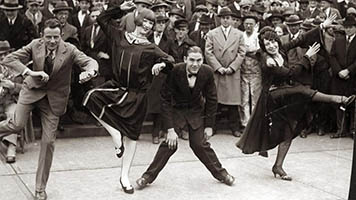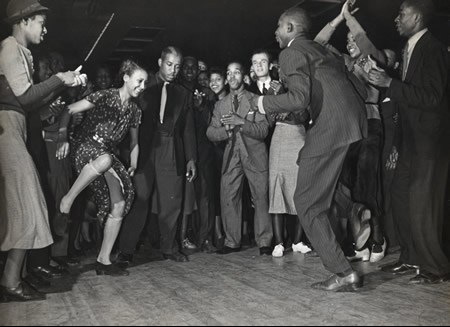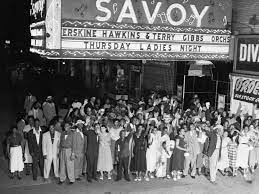Blog
Swing dances: from Breakaway to Lindy Hop

HOW THE BREAKAWAY SEPARATED THE COUPLE
Swing dancing is to 'separation' as Swing music is to 'bouncing'. This may seem a somewhat cryptic simplification but, if you have the patience to follow the thread of events, you will certainly agree. Swing, understood as dance, was in fact born and developed essentially in the deep South of the United States on the rhythms of ragtime. (Read the dedicated article). And it can be identified, wanting to give it a birthright always at the turn of the 19th and 20th centuries, with Breakaway. If the Swing of the musicians can be defined as a sort of rhythmic bounce, that of the dancers is therefore characterised by physical 'separation', break a way precisely. The open position, the real novelty of the style. Invented, needless to say, by the imagination and improvisation of African-Americans.

Originally, the new dance was a syncopated two-step: the dancing couple would break away while still holding hands (open position), perform an impromptu solo while keeping the musical rhythm, and then come together again (closed position). Within it, breakaway had absorbed the steps of other dances in vogue: the Apache Dance and the Texas Tommy (which already involved brief 'separations' between dancers), the Two-step, the Turkey Trot, the Cakewalk and the Grizzly Bear. From time to time the dancers, during the short spaced-out phase, would show off their tap skills, syncopate or skillfully grind the step.
Breakaway was thus the name of the swing dance before Shorty George changed it to Lindy Hop, in 1927, in honour of the feat of the Atlantic flyer Charles Lindbergh. In the meantime, Breakaway had merged with the Charleston, which exploded in the 1920s against the backdrop of Harlem, losing some of its initial connotation as 'Negro dance' and increasingly involving white dancers.
BREAKAWAY PLUS CHARLESTON: HER MAJESTY THE LINDY IS BORN
Frankie Manning explains in his autobiography that combination of Breakaway and Charleston that actually formed the Lindy Hop. Charleston steps were performed individually or by a separate couple, whereas breakaway presupposed that the dancers danced together. As soon as the two dances began to develop in the ballroom, the charleston also began to be done in pairs, in the classic ballroom dance position. In lindy hop, there is no male and female, but leader and follower, who leads and who follows, regardless of gender. At that time, around the 1920s, two women or two men could dance together without scandal. The structure of the dance is in eight steps with a very low posture, a little slouching on the legs, the famous bounce.
Lindy hop developed over a longer period of time than Breakaway, and thus had a slower period of growth, during which it was exposed to multiple external influences. One of the main differences between the two dances was the space required to perform them. In Breakaway, the dancers' feet described a small circle, whereas Lindy hop was characterised by a wider, more oblong trajectory on the dance floor. Its great success was also due to the continuous developments and transformations of dance music in Harlem and the legendary Savoy Ballroom. The sustained rhythms of swing were reflected in the Lindy with a wider and longer separation between the two dancers, with the release of the hand or, in some cases, both hands, pushing more and more towards improvisation, thus favouring any innovative opportunities. An unstoppable explosion of ever new steps.

And what happened to the Charleston? During the 1930s, the Savoy dancers created many variations on this dance: from turn-over to hand to hand, from long-legged to flying and squat. Offering the charleston de facto a new life. However, Frankie and the other dancers at the Savoy thought only of performing Charleston steps within the Lindy. They never thought of themselves as Charleston dancers (quoted from Frankie Manning's book 'Ambassador of the Lindy hop').
About the author


